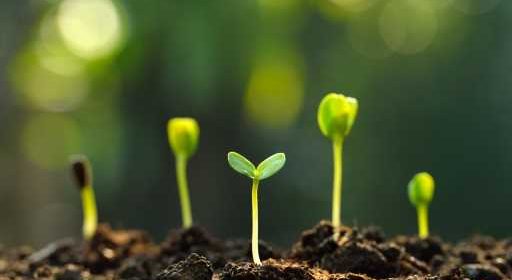It’s time for spring seeding in Colorado. Here’s how to start.

Spring is more than around the corner; for Colorado gardeners, it is within sight and there’s no time to waste.
Here are some of the plant decision-making items you’ll need to make soon for the upcoming outdoor growing season.
No. 1: Choose whether to start your own seeds in your home or purchase plants at a garden center or plant sale event. (You certainly can do both.)
Starting seeds indoors makes dreaming of spring a reality. Plus, it puts you in the driver’s seat of plant choices, and it’s not too straining on the pocketbook.
No. 2: If starting seeds, what kind of plants do you wish to grow? There are ornamental annuals that bloom during the current outdoor growing season, along with vegetables and herbs that can be planted out in the garden at the best time for growth and eating enjoyment. Perennial plants that grow for many years in a landscape might be on your list as well.
No. 3: Timing matters if the plants you are seeding indoors will be transplanted outdoors. Folks who garden at higher elevations need to add a few weeks since the outdoor growing season is shorter.
Here is a short list of seeds and when to start them. (You’ll find many more seed choices at your local garden center and online.)
- Cool-season vegetables — including cabbage, cauliflower, broccoli, onions, celery and Brussels sprouts — should be started indoors in early March for transplanting out into the garden starting in April (weather and soil conditions permitting).
- Ornamental seeds that can also be started in early March include rudbeckia (black-eyed Susan), craspedia (drumstick flower), dephinium, polygonum, asclepias (butterfly weed), salvia, snapdragon, stock, sunflowers, verbena, angelonia, hollyhock, viola and impatiens.
- Wait until late March into April to start seeds of warm-season vegetables like tomatoes, peppers, eggplant and tomatillos for transplanting outdoors when all chance of spring frost is a distant memory.
Indoor seed starting tips
Test your seed viability if the packet is more than three years old. Scatter about 10 of the seeds on a damp paper towel. Fold and put in a plastic bag (tie) near a sunny window. If fewer than half the seeds sprout after 10 days, buy new seeds.
In addition to store-bought seed trays and kits, don’t overlook items from home: Yogurt cups, butter tubs, egg cartons, plastic lettuce packages and even those wooden boxes that clementines are sold in can be used to start seeds. Be sure to sterilize them well: After cleaning with soap and water, wipe them with hydrogen peroxide or a 10% bleach solution.
Steps for seeding
- Poke or drill drainage holes in all containers.
- Read the seed packet thoroughly for helpful seeding, timing and growing information.
- Use a label system for each plant or tray. You think you’ll remember, but things happen. Use a permanent pen or store-bought plant markers or cut up a plastic tub or lids to make your own.
- Always use sterile seed-starting mix sold at garden centers and online. Moisten it before filling the trays or containers.
- Remove plastic covers or domes immediately after germination to lower the humidity levels.
- Use a heat mat for quicker germination and growth on warmth-loving seeds like basil, peppers and tomatoes. Don’t plug the heat mat into the light timer, however; the heat mat needs to be on all the time. Heat mats are a bit pricey but will last for years. After the plants are up and growing well, it’s OK to remove the heat mat.
Lighting for seed growth
Regular, inexpensive cool-light fluorescent tubes work fine for lighting. You’ll like the growing results with the newer LED skinny light tubes. Sunny east and south-facing windows can be used in place of grow lights, but results may be better when using grow lights for seed starting.
If just getting started, start small and invest in a plant grow-light bulb in a lamp when space and resources are tight. (You can always expand your indoor seeding supplies next year.)
Place the newly emerged seeds close, just a few inches, under growing lights. LED lighting is warmer than older fluorescent lights, so keep an eye on the foliage and move the lights up if they start to brown at the leaf tips.
Hang chains attached to a wooden frame to easily move lights upward as plants grow. A range of store-bought light systems and styles are also available.
Use a timer and keep the lights on for 12-16 hours each day.
Watering and fending off disease
Place a fan near the seedling trays, not too close. Keep it on 24/7 at the lowest setting until the plants are up and growing well, usually after two or three weeks. Air circulation is the best defense against the seedlings suddenly collapsing and dying (also called “damping off disease”).
Seedlings prefer to be watered with room temperature water, so fill a clean watering can with water and leave it close to the seeds. Cold water may slow seedling growth and lead to damping off.
Avoid over-watering and never let the trays or containers stand in water for any length of time.
My backup for water lapses is using a capillary mat under the seed tray. They look and feel like felt and are very absorbent. They are usually sold in rolls or sheets at garden centers and online. Cut the mat to the size of your tray. Mats are reusable from year to year and machine washable on the gentle cycle (air dry). Simply pour some room temperature water over the mat about every other day or as needed and leave it to the seeds to soak up what they need right to the plant roots.
Resources
Seeding and Plant Timing Charts for Annuals, Herbs, Cool and Warm Season Vegetables https://gardenpunchlist.blogspot.com/2019/02/seeding-and-planting-charts-all-of-them.html
Seed Starting Video https://www.youtube.com/watch?v=e0kNwwJnwJU
Growing Plants from Seeds https://extension.colostate.edu/topic-areas/yard-garden/growing-plants-from-seed-7-409/
Source: Read Full Article


